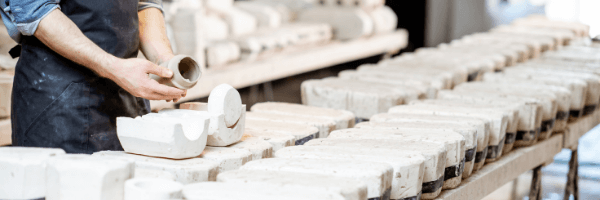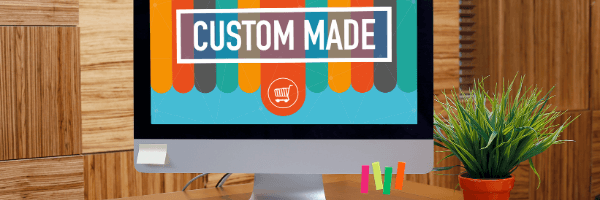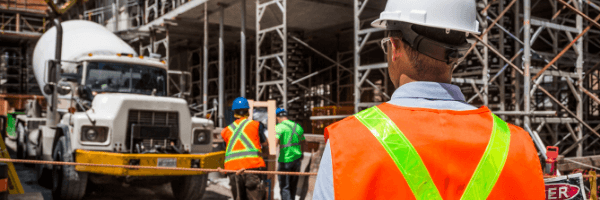
May 06, 2024
Digital Twin – Computer Vision Use Case
Author:

CEO & Co-Founder
Reading time:
9 minutes
At first, digital twins and computer vision seem to be two completely different technologies. However, as it happens, both these technologies have a lot in common and can be used to enhance many processes and procedures. They find applications in many significant fields, such as digital manufacturing or the aerospace industry. This article will show you two fascinating computer vision use cases where digital twins also play a crucial role.
In this article, we want to focus strictly on two computer vision use cases combined with digital twin technology. We will show you how both these technologies create synergy in the digital manufacturing and aerospace industry.
To make all that understandable and clear, let’s take a brief look at both these AI-related technologies.
How can digital twins enhance production processes?
As you know from our previous article, digital twins are utilized to create a digital version of a product or device. This solution allows companies to get priceless insights about improving operations, increasing efficiency, reducing costs, or discovering issues or glitches before they happen. You have to know; it’s more than just a model of the physical object. Digital twins are supported by the IoT sensors so that the twin can receive continuous, real-time data coming from the physical product. As a result, you can literally observe how your products react and behave. And you have all of that data on your screen!
Digital twins play a significant role in the digital manufacturing sector. Here, it’s all about designing the digital version of the product, production process, and assets first. It’s a massive simplification, but the process usually looks like that:

Digital Twin Process: Product digital twin -> production digital twin -> assets digital twin
When this part is done, you can switch to the real-life version of this process. Currently, digital twins are utilized primarily to manage the performance, effectiveness, and quality of various assets in the production process, such as manufacturing machines, lines, and plants.

Such an approach that combines computer vision, digital twins and data analytics provides a more detailed view of asset and production management. It allows manufacturers to optimize costs and improve their solutions.
When it comes to digital manufacturing, digital twins are utilized especially in these three areas:
Enginering
Virtual representations of products, machines, and processes allow you to enhance them and find possible faults in an effective and cost-optimal way. In essence, you start by developing a vision of what the ready-made product should be like and how it should work.
Customization
Let’s face it–many products have to be customizable and evolve in time—just to mention smartphones or fridges. Frequently, it’s the feedback coming from the market that forces some changes and adjustments. In a traditional manufacturing process, it can be tricky to incorporate customer feedback into the process. It takes time and can be costly. Not with digital twin technology, though! With this technology, it’s a breeze to customize the existing product and implement more/new customization options.

Not only digital twin can help you with product customization, but it also gives a more comprehensive picture of customer demand trends. As a result, you can thoroughly understand how custom configurations affect your sales performance by processing customer usage data.
Operations
In digital manufacturing, manufacturers first create a virtual representation of a product or an asset. Next, they gather data from it, which gives them a more exhaustive picture of the real-world production performance and operating conditions or environment.
Let’s say you run a company that produces turbochargers. Thanks to digital twin technology, your company can gather data regarding rotor speed, operating temperature, pressure, efficiency, material strength, etc.- all of that without the need to start mass production! You just need a prototype and IoT sensors that will make it accessible to build its digital twin. As a result, you can collect more data, improve your product, and identify potential glitches before they happen.
Where is computer vision in all of that?
Now, let’s concentrate on computer vision. You see, manufacturing companies have to be able to capture and process visual information in real-time. Computer vision transfers images to algorithms and enables almost instant feedback regarding the production process.
As you already know from our past blog posts, computer vision algorithms rely on various instruments, lenses, image sensors, and vision processing software. This technology is commonly used in many sectors, just to mention the automotive, pharmaceutical, and printing industries.
Today, computer vision use cases become an integral part of every modern manufacturing line. And thanks to machine learning and image processing techniques, computer vision use cases are now more and more extensive. Computer vision applications are no longer limited just to structured, repetitive tasks. Nowadays, they offer vital help that results in improved efficiency, fewer errors, and a better understanding of data.
At this point, we have to state that when it comes to the manufacturing process, we frequently speak about machine vision.
What is machine vision?
In general, it’s a subset of computer vision. Just like computer vision, they are based on cameras, radars, sensors, lights, and software, but this technology is adjusted to the manufacturing sector’s needs. Machine vision algorithms are capable of:
- Detecting deviations and automatically initiating corrective actions.
- Detecting quality defects
- Processing visual information at a much faster pace (compared to human workers)

These systems are designed primarily to work with human operations and make them more accurate and effective. They support human workers if you will.
Digital twin + computer vision use case – a perfect synergy
To sum this part up – in the modern digital manufacturing process, computer vision use cases and digital twins are inseparable, and both of them play a key role.
- Computer vision helps in monitoring the entire process and finding potential sources of problems. This technology is much more efficient and quick in comparison to human employees.
- Digital twins help improve the final product by providing a much better understanding of it, its production process, and potential glitches of flaws that can be spotted in normal use. Thanks to digital twins, manufacturers can improve their products before they reach the market, allowing them to save millions of dollars!
So far, we have shown you a digital twin + computer vision use case in the digital manufacturing sector. We have one more example in-store. In fact, it’s our own project that we are incredibly proud of.
Digital twin + computer vision use case in the aerospace industry
One of our clients is a company that operates in the aerospace industry. They were vitally interested in what happens at an airport. The problem was elements were collected and presented independently. As a result, it was difficult to see the overall picture of how all the elements interact. Moreover, it was hard to generate a historical view to observe how an airport previously handled disruption caused by, for example, poor weather conditions.
We decided to implement a solution that comprised:
- Advanced data engineering
- AI-related techniques
- Computer vision
- A digital twin
We created an operation control interface using digital twins to collect everything that happens at the airport. Why was our solution better?
Thanks to the computer vision use case and predictive modeling technology, we could cover all the relevant parameters:
- Arriving and departing airplanes
- The number of passengers involved
- Waiting times
- Escalator operations
- Passenger satisfaction with restrooms
- Traffic flows at drop-off and pick-up, and many more factors.
Now, our client has the perfect, overall picture of all airport operations and events. But we did more. In addition to just showing what happens at the given time, we can also choose a moment in history and replay exactly what happened in the past. This is a very effective way to investigate how the disruption was handled, as well as to determine what can be done better next time.

This project undoubtedly confirms that computer vision and digital twin technology can create a great team that works for your success. If you are interested in implementing these solutions in your company – drop us a line. We are always keen to show you all the benefits of digital twins and computer vision solutions. Also, we will gladly show you more of our computer vision use cases!
Digital Twin Computer Vision Use Case – FAQ
What are digital twins, and how do they enhance production processes?
Digital twins are virtual replicas of physical products, devices, or processes that receive real-time data from IoT sensors. They provide insights into improving operations, increasing efficiency, reducing costs, and identifying issues before they occur. In manufacturing, digital twins are utilized for product, production, and asset management, optimizing performance and quality.
What are the key areas where digital twins are utilized in digital manufacturing?
Digital twins are especially utilized in engineering for enhancing product design, customization for incorporating customer feedback and trends, and operations for monitoring real-world production performance and conditions.
What role does computer vision play in modern manufacturing?
Computer vision involves capturing and processing visual information in real-time, providing instant feedback on the production process. It relies on various instruments, lenses, image sensors, and vision processing software to improve efficiency, reduce errors, and understand data better.
What is machine vision, and how does it differ from computer vision?
Machine vision is a subset of computer vision adjusted to the manufacturing sector’s needs. It detects deviations, quality defects, and processes visual information faster than human workers. It supports human operations, making them more accurate and effective.
How do digital twins and computer vision work together in manufacturing?
Digital twins provide a comprehensive understanding of products and processes, while computer vision monitors the production process in real-time, identifying potential issues quickly and efficiently. This synergy improves product quality, reduces costs, and enhances overall efficiency.
Can you provide an example of digital twin + computer vision use case in manufacturing?
In the aerospace industry, a combination of digital twins and computer vision was used to monitor airport operations comprehensively. By collecting data from various elements like arriving and departing airplanes, passenger traffic, and facilities usage, manufacturers gained valuable insights into improving airport efficiency and handling disruptions effectively.
How can I implement digital twins and computer vision solutions in my company?
If you’re interested in implementing these solutions in your company, you can reach out to us for further assistance. We’ll be happy to demonstrate the benefits of digital twins and computer vision and provide more examples of their use cases tailored to your specific industry or needs.
This is an updated version of the publication from Oct 16, 2020.
Category:






